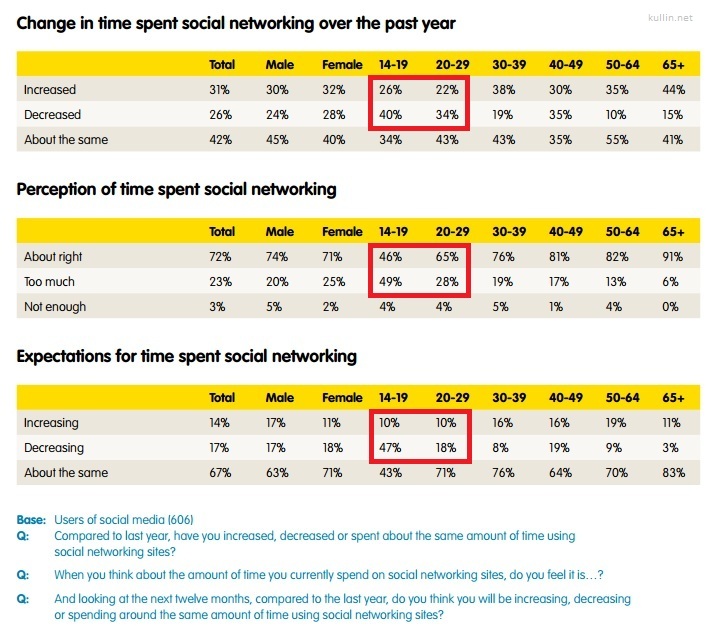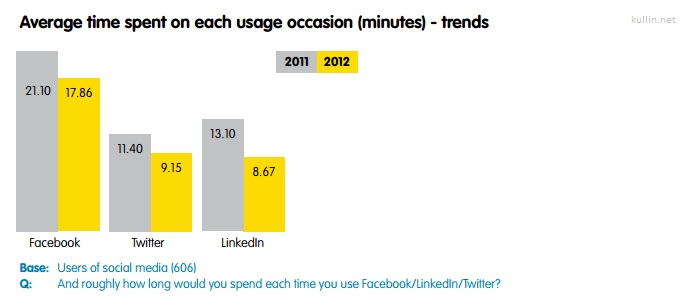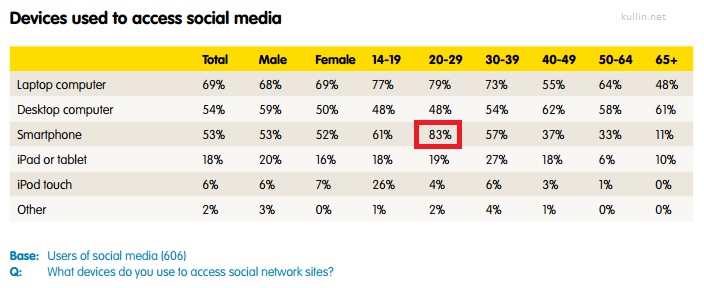The recent IPO of social network giant Facebook is as most of you know, not going too well. The stock has dropped considerably during its first days of trading, which is also negatively affecting other listed social media brands such as Zynga. To add insult to injury, a new report from Australia reveals that young people who are on social networks are spending less time on them in 2012 than they did a year before. Average time spent on Facebook is lower this year than it was in 2011. Furthermore, more social network users predict they will decrease time spent on social media in the near future.
The report called The 2012 Yellow Social Media Report has surveyed Australian consumers and business to understand how they use social media. The figures below indicate that the two age groups that are the most frequent users of social networks (14-19 and 20-29), have already decreased their usage and feel they need to decrease even more.
The overall numbers also show that average time spent on social networks by Austalians is far less in 2012 than in 2011.
This is of course not a good sign for Facebook. Of course, total time spent on Facebook could still increase, but as markets mature and penetration levels out, it is vital that the average time spent on the site is not decreasing. It would be interesting to see if the pattern from Australia can be observed also in other countries. If you know of any more surveys, please post it in the comments.
Another interesting statistic from the survey is that among users age 20-29 in Australia, the smart phone is now the number one device for accessing the social networks.
Full report here in pdf. Bonus stat: 5% of social media users access social media on the toilet.





